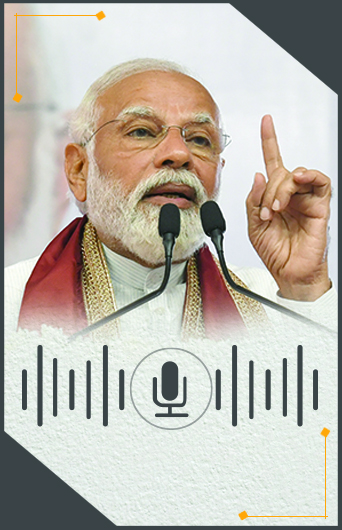Green India Vision: How EVs and New Highways Are Driving PM Modi’s Sustainable Future Plan
On Independence Day 2025, Prime Minister Narendra Modi reaffirmed India’s commitment to self-reliance and green growth—highlighting domestic manufacturing of EV batteries alongside ambitious infrastructure milestones. His address emphasized that independence extends beyond freedom—it includes energy sovereignty and climate-aligned growth.
This article explores that vision: from EV policy and charging networks to electrified national highways and burgeoning green infrastructure. It connects the Prime Minister’s strategic direction with concrete developments underway across the automotive and transport sectors. We’ll examine:
1. The green energy impetus from PM Modi’s speech.
2. National highway expansion and expressway projects.
3. EV ecosystem growth—subsidies, infrastructure, and public initiatives.
Let’s dive into how vision is being translated into action, leveraging India’s path toward a sustainable, interconnected future.
1. Prime Minister’s Vision: Green Energy & Self-Reliance

In his Independence Day address, PM Modi called for “self-reliance” across strategic sectors—from fertilizers to jet engines and notably, EV batteries . He emphasized the need to reduce dependence on energy imports through green energy, nuclear and renewable sources . Additionally, reforms in GST and digital tools like UPI underlined broader structural support for local manufacturing.
Earlier addresses—such as at India Energy Week—showcased India’s pledge to scale renewables, biofuels, and green hydrogen, facilitating sustainable energy transition.
Collectively, these declarations underscore a critical shift: economic growth must be clean, inclusive, and anchored in domestic capabilities—pivotal for the EV and green infrastructure surge.
2. Roads to Progress: National Highway & Expressway Expansion
PM Modi’s infrastructure push aligns with India’s highway acceleration. Several mega projects are reshaping regional connectivity:
Bengaluru–Chennai Expressway: Opened its Karnataka segment in late 2024, with full Chennai linkage targeted for August 2025. Travel time between the two cities will shrink from 7–8 to about 2–3 hours .
Amritsar–Jamnagar Expressway: Nearly 1,400 km of economic corridor connecting Punjab to Gujarat under the Bharatmala program. Completion by end-2025 will slash travel time from ~26 to 13 hours, while strengthening industrial and port connectivity.
Raipur–Visakhapatnam Expressway: A 464-km greenfield route operational by 2025, reducing travel from 13 to 6–7 hours. It’s part of the East Coast Economic Corridor and opens Central India to eastern trade flows.
Varanasi–Kolkata Expressway: Foundation laid in early 2024; upon completion by 2027, it will cut transit between these cultural capitals by 4–5 hours and deepen East–West connectivity.
These projects reinforce PM Modi’s “Green India” framework—efficient transport corridors reduce emissions, boost trade, and integrate regional economies.
3. EV Ecosystem Growth: Subsidies, Infrastructure & Access

India’s EV revolution is being engineered with policy calibration and infrastructure expansion.
a) Policy Support & FAME-II
The FAME-II (Faster Adoption and Manufacturing of Hybrid & Electric Vehicles) scheme remains a cornerstone—offering ₹15,000 per kWh subsidies for electric two-wheelers and three-wheelers, alongside incentives for e-buses and charging infrastructure.
b) Charging Infrastructure Expansion
As of early 2025, India achieved over 10,000 public charging points, prominently DC fast chargers—cutting recharge times to under 30 minutes.
The PM e-Drive initiative targets 10,000 new charging stations (with strategic focus on highways and urban zones), backed by public–private partnerships .
Government projects across 2025 introduced 2,500+ new charging stations across 50+ cities and key inter-state highways, bridging urban and regional access gaps.
India is also rolling out 72,000+ charging points under expansive e-mobility plans, evidencing strong infrastructure moment.
c) Private Sector Momentum
Tata Motors plans to more than double its charging network—to 400,000 points—including 30,000 new public chargers and a 120 kW “Mega Charger” array at 500 sites accessible to all EV brands.
d) State-Level Leadership
Uttar Pradesh leads in EV adoption—over 400,000 registrations, largely driven by e-rickshaws (85%). Ev infrastructure expansion via FAME benefits, 300 new chargers planned across 16 municipalities, and supportive EV policy reinforce UP’s green trajectory.
Maharashtra offers toll exemptions for EVs on major highways and plans charging points every 25 km on state and national routes. The new EV Policy targets 30% new EV registrations by 2030, with focus on reducing emissions and promoting zero-emission transport.
Impact Summary
Policy Support – Strong government backing via FAME-II subsidies and toll exemptions for EVs.
Charging Reach – Over 10,000 public chargers nationwide, with 2,500+ new stations added in 2025 alone.
Private Investments – Tata Motors plans 400,000 charging points, including 30,000 public chargers and 120 kW “Mega Chargers.”
State Leadership – Uttar Pradesh leads in EV registrations; Maharashtra offers toll-free access and plans chargers every 25 km on highways.
These developments reflect a multi-pronged strategy—policy, infrastructure, and private ecosystems—to deliver EV-driven sustainability.
4. What This Means for India’s Future

The convergence of highway expansion and EV ecosystem growth signals India’s transition to a clean, connected, and self-reliant mobility future:
Lower emissions: Expressways and electric lanes reduce travel times and diesel dependency.
Energy independence: PM Modi’s manufacturing push—for EV batteries and green energy—reinforces resilience amid global strains.
Inclusive mobility: Rural and urban expansion of charging networks and highways democratizes green transport access.
Economic opportunities: Infrastructure projects stimulate investment, job creation, and regional industry—consistent with “Viksit Bharat” goals and PM Expo remarks on mobility growth and export potential.
In essence, India’s “Green India” isn’t just aspirational—it is tangible on the ground through roads, wires, and wheels.
Final Thoughts
India’s Independence Day 2025 was more than a symbolic celebration—it was a declaration: India is racing forward on green, sustainable, and resilient mobility. From PM Modi’s call for EV battery self-reliance and clean energy to aggressive highway expansions and investment in charging infrastructure, the country is laying the foundations of long-term, equitable growth.
India is steering toward a future where highways are electric corridors, mobility is emission-free, and energy is domestically powered. Through policy, infrastructure, and collaborative vision, the “Green India” push is transforming roads, cities, and lives—driving the nation closer to its sustainable, sovereign tomorrow. You can also visit: https://www.pmindia.gov.in/en/
You may also like to read: https://khabarkhabri.com/economic-announcements-3024/

